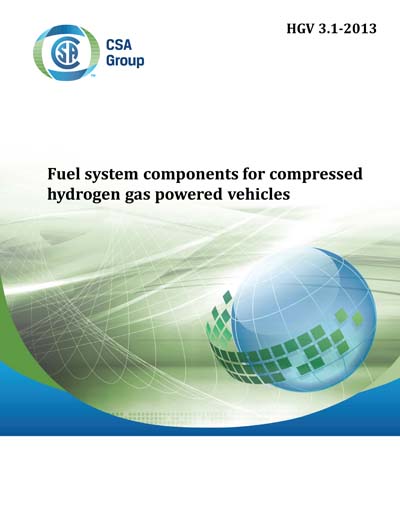Historical
CSA HGV 3.1-2013
HGV 3.1-2013 - Fuel system components for compressed hydrogen gas powered vehicles
Preface
This is the first edition of HGV 3.1, Fuel system components for compressed hydrogen gas powered vehicles. This Standard is considered suitable for use for conformity assessment within the stated scope of the Standard.Scope
1.1 This standard establishes requirements for newly produced compressed hydrogen gas fuel system components, intended for use on hydrogen gas powered vehicles as listed below:- check valves;
- manual valves;
- manual container valves;
- automatic valves;
- gas injectors;
- pressure indicators;
- pressure regulator;
- pressure relief valves;
- pressure relief devices;
- excess flow valves;
- gas tight housing and ventilation lines and passages;
- rigid fuel lines;
- flexible fuel lines;
- filter housing;
- fittings; and
- discharge line closures.
- H25 - 25 MPa;
- H35 - 35 MPa;
- H50 - 50 MPa;
- H70 - 70 MPa.
- hydrogen gas fuel system components incorporated during the manufacture of motor vehicles originally manufactured in compliance with the Federal Motor Vehicle Safety Standards (FMVSS) for Compressed Hydrogen Gas Fueled Vehicles and the Canadian Motor Vehicle Safety Standard (CMVSS);
- fuel containers;
- stationary gas engines;
- container mounting hardware;
- electronic fuel management;
- refueling receptacles; or
- three-way valves.
Content Provider
CSA America, Inc. [csa]






